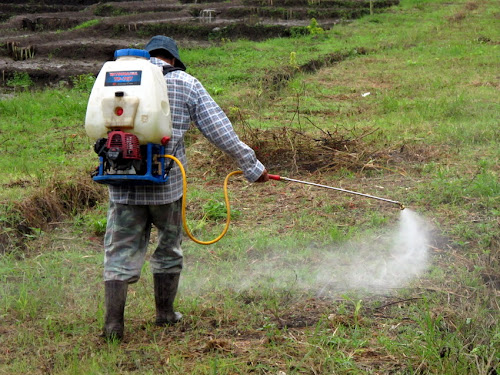
Heeding the instructions of the gianormous Lonely Planet India guide, I struck out north of Bageshwar to the tiny villages of and Loharket, where I found my trailhead for the Pindari Glacier. This trip lasted about six days, walking maybe 12 miles a day with lots of elevation change. At the beginning of the hike, the stone path wove through farms and villages through the forests and valleys, and I shared the path with locals. These guys living along the trail were all stripping bamboo to make baskets and to repair roofs.


Village of Khati with snow-capped mountains in the background. This hike was very easy. There were some signs only in Hindi (that I'm happy to say I could read), but one could have just followed the largest trail. As I was slightly ahead of the "hiking season," I only saw maybe four groups of other hikers or rather "tourists" on the trail. They all seemed to be impressed that I was walking without a guide and without a porter. Don't know why you would need a guide when there were villagers for a lot of the way to ask directions to and don't know why you would need a porter when you could sleep at and get provisions (hard-boiled eggs, cookies, crackers, chips, sometimes produce) along the way at chai huts and guest houses that also served dal, rice, potatoes and chapatis. I slept outside but enjoyed chais at the huts and meals at trailside kitchens.

Some boys were playing cricket.

Nearing Khati...I like that in this image one can see three aspects of India: religion, modernity and agricultural tradition. The Aum mural represents Hinduism, the TV satellite symbolizes modernity and the women carrying baskets of cut grass for their cattle shows their ancient relationship with the land and their livestock.

Guys taking in the view on the trail.

At lower elevations, the rhodendrons were in bloom.

Pindari River with Nanda Devi in the background. Over 25,600 feet high, Nanda Devi is India's second highest mountain...That is freakin' high! The Himalayas are, after all, the highest mountain range in the world.


On my way to Kafni Glacier, I started looking for a place to crash as it started to get dark and the temperature started to drop.

Working on a farm of the plains of Uttar Pradesh, I really really wanted to escape the heat. I wanted to venture to the mountains to find some cool air. Well, I overdid it. Here's my sleeping bag at 12,000 feet where I spent a very chilly night. I used the dry grass for extra insulation and warmth. Incredibly, with mountains this high, even at 12,000 feet, the tallest peaks are still another 12,000 feet higher up.

Close to where I slept, the fields of snow began...

You can see that much of the trail is obscured by snow.

For joy I jumped.

That's Kafni Glacier back there. At some point, I decided to check out Kafni Glacier instead of the more famous Pindari. Then, after descending a few thousand feet to a trail intersection, I took a different trail to try and reach Pindari Glacier too.



See the footsteps in the snow? I wanted to make it to the "Zero Point" near Pindari Glacier to visit the Baba (Indian holy man) living there. So far this year, he was the only person to travel to the glacier (if he arrived). And I wanted to be the second. I realize it sounds cliche, but I wanted to climb the Himalayan mountains to visit the holy man at the end of the trail! Alas, with so many very steep traverses across ice at unfriendly angles of steepness, I finally decided to play it safe and turn back. Maybe with an ice axe or even crampons I would have felt more comfortable, but I was just wearing sneakers.

Here I strung up my hammock with a lovely view of a giant waterfall. All along the valley towards Pindari, there were huge waterfalls. Compared to what I'm used to, the sheer size of these massive mountains and their valleys was impressive.


Periodically, I came across herds of sheep and goats with their shepherds roaming the rolling valleys.

On the way back, I took a side trip up to this temple atop a mountain...































































